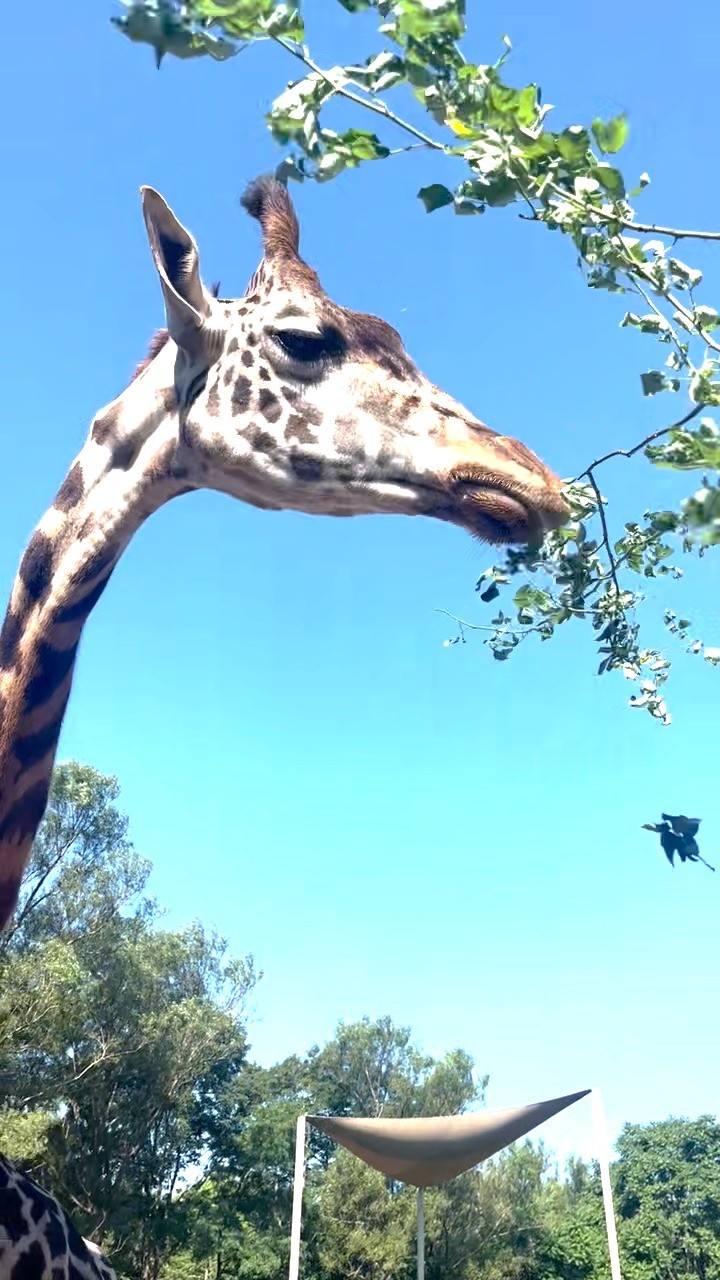- Understanding the dietary habits of the Amari giraffe.
- The challenges and adaptations of giraffes eating thorny plants.
- The ecological impact of multiflora rose as an invasive species.
- Efforts by Franklin Park Zoo to use invasive species to feed giraffes.
- The role of zookeepers in providing sustainable browse for zoo animals.
Amari giraffe looooves a tasty nosh of multiflora rose—as you can see. Oh, but roses have thorns! This statement embodies more than a simple feeding habit; it encapsulates a complex relationship between an animal and its environment. Giraffes, particularly the Masai giraffes, have evolved to thrive on thorny plants, a testament to nature’s intricate adaptations.
Giraffes are often depicted serenely reaching up to nibble on treetop foliage. However, their dietary habits are a marvel of evolutionary specialization. The Amari giraffe, for instance, consumes thorny plants like multiflora rose with apparent ease. Multiflora rose is an invasive species, detrimental to many native vegetation communities. However, giraffes have a preference for this lush, thorn-ridden browse.
Thorns, a natural defense mechanism for roses, pose little challenge to giraffes. Native to Africa, where thorny acacia trees are abundant, Masai giraffes have adapted unique feeding adaptations. They boast long, flexible necks to access high branches and slick, prehensile tongues to deftly strip these branches of leaves. Their tongues, extending up to 18 inches, are prehensile but also dexterous and tough, allowing them to navigate the thorns precisely.
Moreover, giraffes produce thick, gooey saliva that coats any ingested thorns. This saliva is essential, protecting their mouths and digestive tracts from damage. It acts as a lubricant, facilitating the passage of sharp objects. Such adaptations highlight the giraffe’s evolutionary ingenuity in transforming potential hazards into dietary staples.
At Franklin Park Zoo, the multiflora rose is not merely a nuisance but a resourceful solution to giraffe nutrition. As it is an invasive species, managing its spread is critical. The zoo leverages this opportunity, cutting and offering the multiflora rose as a browse for giraffes. This strategy curbs the spread of the invasive plant and provides an abundant and nutritious food source for the giraffes.
The zoo’s efforts extend beyond simple feeding. A dedicated team of zookeepers works tirelessly to harvest browse for the animals throughout the summer. Their task involves identifying suitable plants, ensuring they are free from harmful chemicals, and cutting them to promote regrowth. Harvesting browse from invasive species like multiflora rose effectively kills two birds with one stone: it controls an unwanted species while nourishing the giraffes.
The role of zookeepers in this process is crucial. They must understand the giraffes’ dietary preferences and nutritional needs, ensuring a balanced and varied diet. Zookeepers must also be aware of the ecological implications of their actions, balancing animal care with environmental stewardship. Their work revolves around the principle of sustainability, aiming to maintain healthy ecosystems within and beyond the zoo.
This initiative underscores a broader theme in modern zoo management and wildlife conservation: integrating animal care with ecological health. By utilizing invasive species as food sources, zoos can contribute to broader conservation goals. This practice also educates the public about the impacts of invasive species and the importance of ecological balance.
Like the Amari giraffe, Giraffes at Franklin Park Zoo thrive on the multiflora rose despite its thorny defenses. This dietary habit not only demonstrates giraffes’ incredible adaptations but also reflects innovative approaches to zoo management. By combining animal welfare with ecological management, the zoo ensures the health and well-being of its residents while contributing to environmental conservation efforts.
In summary, the Amari giraffe’s love for multiflora rose exemplifies the remarkable adaptations of giraffes to thorny plants, an adaptation honed over millennia in their native African habitats. For zoos, this feeding habit presents an opportunity to manage invasive species sustainably, ensuring that giraffes receive nutritious browse while contributing to ecological health. The dedication of zookeepers plays a pivotal role in this process, highlighting the interconnectedness of animal care and environmental stewardship.
*****
Source Description
Amari giraffe looooves a tasty nosh of multiflora rose—as you can see.
Oh, but roses have thorns! 🌹
Not a problem for Masai giraffes! Giraffes have evolved to eat thorny acacia trees in their native ranges in Africa. They use their long, flexible necks to reach the branches and slick, prehensile tongues to strip the branches of leaves. Then their thick, gooey saliva coats any thorns, protecting their mouths with each tasty bite.
We have a team at Franklin Park Zoo dedicated to cutting browse for our animals all summer long. Since multiflora rose is an invasive species, serving up this lush browse is a win-win for the giraffes and our grounds!
📹 Keeper Noah


